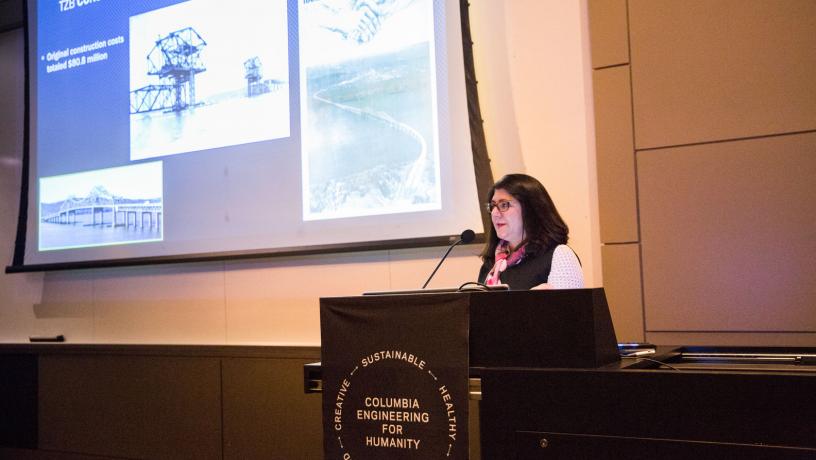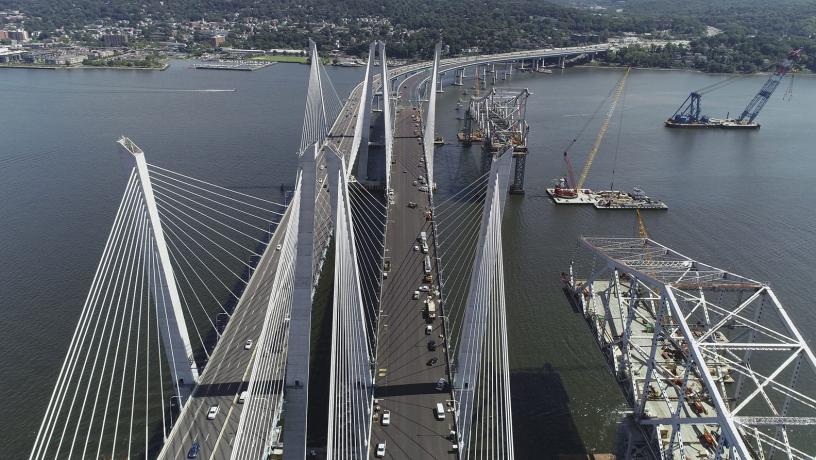A Bridge to the 22nd Century

Jamey Barbas discussed her work overseeing construction of the new Mario Cuomo Bridge at the 2019 Magill Lecture.
It’s hard enough to build the largest bridge in New York history. Harder still—constructing it on a riverbed with the consistency of tapioca pudding.
Those were just the beginning of the complexities surrounding the new Mario M. Cuomo Bridge, explained Jamey Barbas ’81BC MS’83 at Columbia Engineering’s Magill Lecture on February 20. With space at a premium in populous Rockland and Westchester counties, just half an hour north of New York City, the new infrastructure over the Hudson also had to be built directly alongside the old Tappan Zee Bridge, on the same land.
“We’re located over one of the river’s widest points, which is not ordinary,” said Barbas, who oversaw construction as project director for the New York State Thruway Authority.
Until recently, nearly 140,000 drivers a day depended on the antiquated and crumbling Tappan Zee Bridge, built during the Eisenhower administration and increasingly expensive to maintain. Just bringing a new bridge into service will save money over time, but the new design also allows for better service and potential expansion of commuter rail in decades to come.
While accomplishing this civil engineering feat, her team also needed to minimize its environmental impact—a responsibility they took very seriously. In order to disrupt as little of the Hudson ecosystem as possible, and for as short a time as possible, the engineers devised a plan to install prefabricated modular components piece by piece using one of the world’s largest floating cranes, as under their stringent standards they “couldn’t hit a fish,” she quipped.

The Governor Mario M. Cuomo Bridge, which opened in September 2018.
The structure is going to last a hundred years. So we might as well make it beautiful.
The five-year $3.98 billion undertaking has proved slightly bittersweet for Barbas, who was mentored early in her career by one of the builders of the old bridge.
“Little did I know I’d blast it down one day,” she said.
Last fall, major construction was completed on the 3.1-mile twin-spanned new bridge, opening eight lanes for traffic. Later this year, crews are aiming to finalize additional lanes for buses and emergency vehicles, as well as bike paths and a scenic pedestrian walkway.
All along, Barbas’ team has aimed to preserve the aesthetics of the world-famous Hudson Valley, partnering with area artists on design and installations to make the bridge not only convenient but “a place where people can go to get a sense of well-being.”
“The structure is going to last a hundred years,” she said. “So we might as well make it beautiful.”
